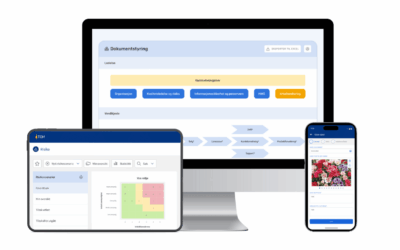11 steps to help you choose the right quality system

Investing in a quality system can quickly become a comprehensive process. For example, imagine that you buy your dream home. Eventually, you also choose to make other upgrades and changes. It is the same with a quality system.
There are many questions that arise before, during and after the process is complete. What should we choose? What modules are needed? How many people should have access? And what kind of assistance can we get?
To help you and your business, we give you 11 tips to get you started when choosing a quality system.
Download the free guide here👇
Download guide: 11 steps to help you choose the right quality system
Download guide: 11 steps to help you choose the right quality system
Related posts
This is new in 4human QM365
4human QM365 has developed a completely new user interface, with a focus on increased usability, a uniform visual expression across the platform and...
Malthe Winje increased its competitiveness with QM365
Background: To strengthen its market position and facilitate further growth, Malthe Winje made a strategic choice: to certify within three...
This is new in 4human TQM
This is new in 4human TQM 2025 We are pleased to present a number of exciting news and improvements in 4human TQM ! This update offers...


